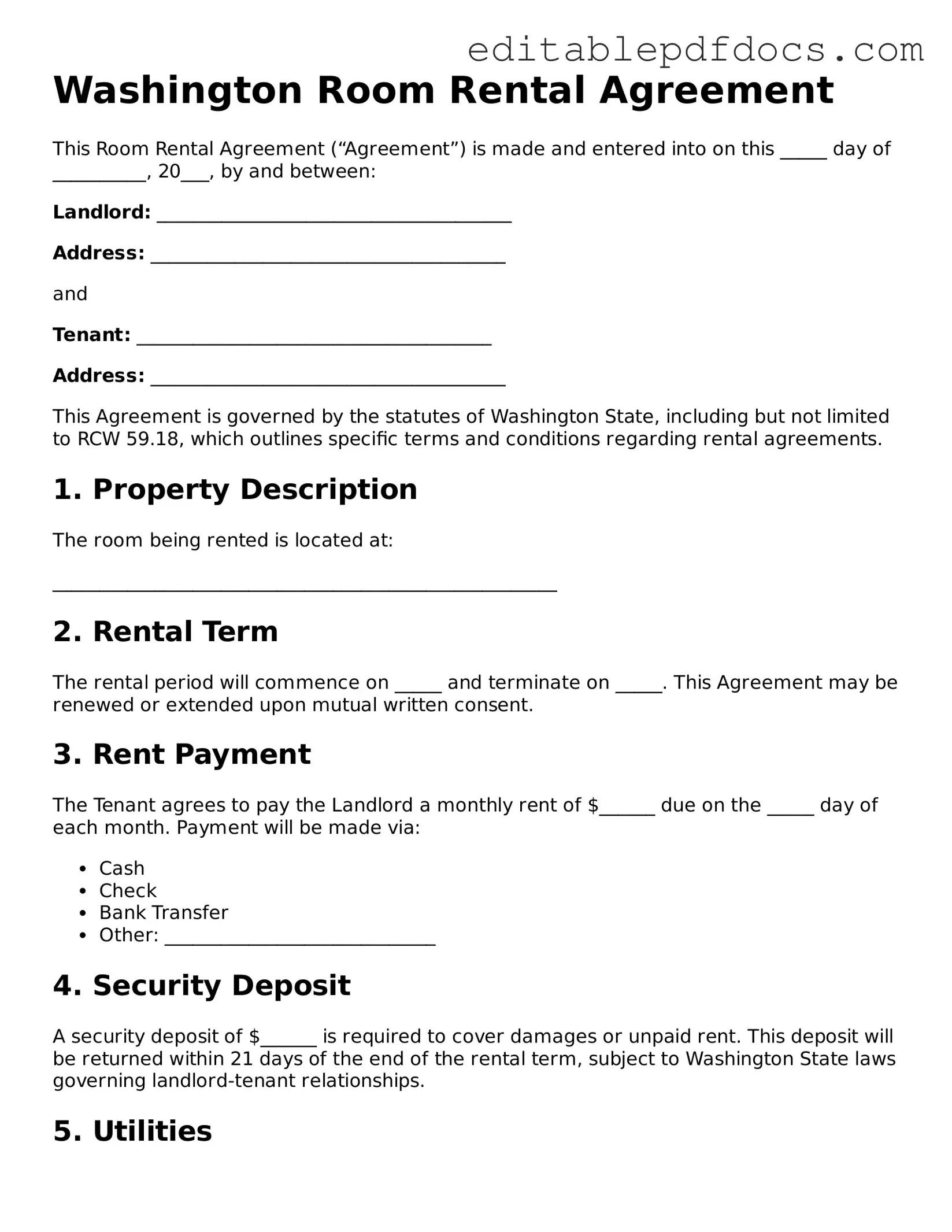Room Rental Agreement Document for Washington
The Washington Room Rental Agreement is a legal document that outlines the terms and conditions under which a room can be rented in the state of Washington. This agreement serves to protect both the landlord and the tenant by clearly defining their rights and responsibilities. Understanding this form is essential for anyone looking to engage in a rental arrangement in Washington.
To ensure a smooth rental experience, consider filling out the form by clicking the button below.
Open Editor Now
